Unveiling Hubei Provincial Museum: A Must-Visit for History Buffs and Culture Enthusiasts

An Essential Guide to Visiting Hubei Provincial Museum
In This Guide
- An Essential Guide to Visiting Hubei Provincial Museum
- The Rich History and Legends of Hubei Provincial Museum
- Main Highlights: What You Absolutely Can’t Miss
- Planning Your Visit: A Practical Guide
- Tickets: Prices, Booking, and Tips
- How to Get There: A Complete Transportation Guide
- Local Cuisine and Accommodation Nearby
- Frequently Asked Questions
- Final Thoughts on Your Trip
Nestled in the vibrant city of Wuhan, the Hubei Provincial Museum stands as a testament to China’s rich tapestry of history and culture. Established in 1953, this remarkable institution houses an astounding collection of approximately 200,000 artifacts that span over two millennia, providing visitors with a deep dive into the ancient civilizations that once thrived in the Hubei region.
As you enter the museum, you are greeted by the echoes of history, where every exhibit tells a story of artistry, ingenuity, and the evolution of Chinese society. From the famous Sword of Goujian, a breathtaking relic that dates back to the Warring States period, to the intricate bronze statuary created using the lost wax technique, the museum is a treasure trove for anyone captivated by the past.
What to Expect
- Diverse Exhibitions: The museum is thoughtfully divided into three main sections:
- The Comprehensive Exhibition Hall, showcasing a wide array of artifacts from various periods.
- The Chu Culture Exhibition Hall, dedicated to the unique heritage of the Chu State, a significant player in ancient Chinese history.
-
The Chime Bell Exhibition Hall, where you can marvel at the remarkable Bianzhong bells that resonate with sounds from centuries ago.
-
Interactive Displays: Engage with history through interactive installations, such as the chime bell simulation, allowing visitors to experience the musical tones of ancient instruments.
-
Free Admission: One of the museum’s most appealing aspects is its free admission policy. However, it’s essential to reserve your tickets in advance via Weixin or WeChat to ensure entry.
-
Guided Experience: While the museum provides audio devices, many travelers recommend hiring a local guide for a richer understanding, as English descriptions may be limited.

Hubei Provincial Museum.
Tips for Your Visit
- Arrive Early: To avoid crowds, particularly at popular exhibits like the Sword of Goujian, plan to arrive at opening time (9 AM).
- Be Prepared for Crowds: Popular displays can attract large groups, so patience may be required, especially if you’re keen on capturing the perfect photograph.
- Bring Your Translation Device: For a more immersive experience, consider using a translation app to enhance your understanding of the exhibits.
Visiting the Hubei Provincial Museum is more than just a trip through time; it’s an opportunity to connect with the profound heritage of China. Whether you’re a history buff or simply curious about Chinese culture, this museum promises to leave you enriched and inspired.
The Rich History and Legends of Hubei Provincial Museum
Discovering the Historical Treasures of Hubei Provincial Museum
Nestled in the vibrant city of Wuhan, the Hubei Provincial Museum stands as a testament to China’s rich tapestry of history and culture. Established in 1953, this museum is not just a collection of artifacts; it is a portal into the ancient civilizations that once thrived in the region, particularly the Chu State, which flourished during the Spring and Autumn Period (770-476 BC). With around 200,000 historical and cultural artifacts, the museum invites international travelers to explore its captivating stories and legends.

Hubei Provincial Museum.
The Legacy of Chu State
The Chu State played a pivotal role in shaping ancient Chinese culture. Renowned for its unique artistic expressions and sophisticated metallurgy, the Chu civilization left behind a wealth of artifacts that the museum proudly showcases. Visitors can delve into the fascinating world of Chu through meticulously preserved relics, including elaborate bronze vessels and intricate textiles. The museum’s layout itself reflects the architectural style of the Chu State, allowing guests to immerse themselves in the ambiance of this remarkable era.
The Sword of Goujian: A Timeless Legend
Among the museum’s most celebrated exhibits is the Sword of Goujian, a 2,500-year-old weapon that has become emblematic of Chinese craftsmanship and heritage. Discovered in the tomb of King Goujian of Yue, the sword is not only known for its exquisite design but also for its remarkable preservation; it remains as sharp today as when it was forged. The legend surrounding the sword speaks of resilience and strength, symbolizing the spirit of the ancient Chinese people. Visitors often find themselves captivated by the aura of the sword, which embodies the triumphs and tribulations of its time.
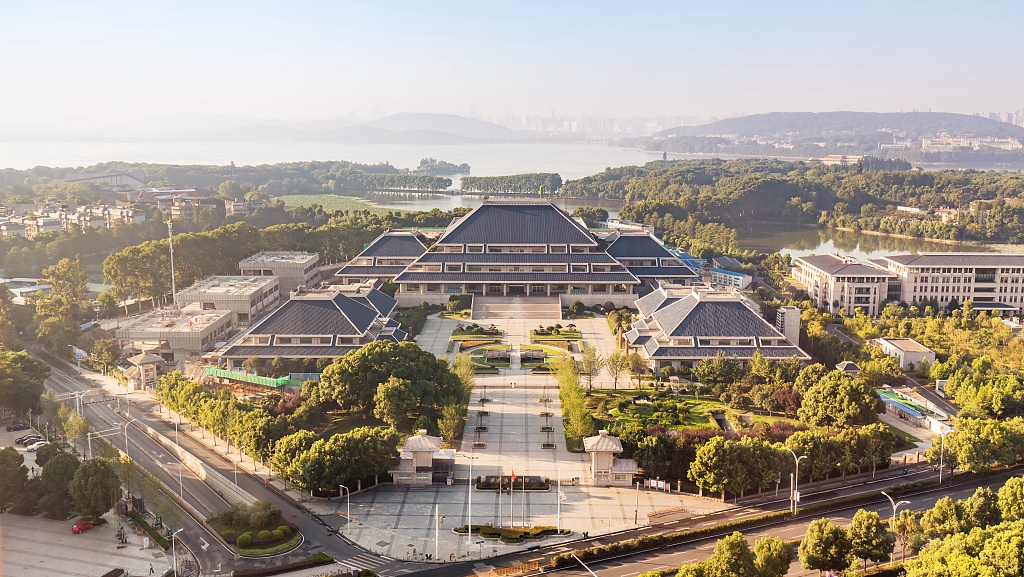
Hubei Provincial Museum.
The Tomb of Marquis Yi
Another highlight of the museum is the Tomb of Marquis Yi of Zeng, discovered in 1978 and dating back to the Warring States Period (475-221 BC). This tomb is a marvel of archaeological achievement, revealing a trove of artifacts that include musical instruments, weaponry, and even a 30-gram silk burial robe that can pass through a wedding ring. The meticulous craftsmanship of the bronze chime bells, known as Bianzhong, is particularly striking, as they have retained their resonant qualities for over two millennia. Visitors can even engage with interactive displays, allowing them to experience the sounds of these ancient instruments firsthand.
Artistic Mastery: The Lost Wax Technique
The museum’s collection also showcases the lost wax casting technique, a method that has been used for centuries to create detailed bronze sculptures and artifacts. This technique exemplifies the advanced metallurgical skills of the ancient artisans of the Chu State, who were able to produce intricate designs that continue to astound modern viewers. The artistry displayed in the bronze statuary is not just a reflection of technical prowess; it encapsulates the spiritual and cultural values that permeated the lives of the people during that era.
Interactive Exhibits and Cultural Immersion
In addition to its impressive collections, the Hubei Provincial Museum offers interactive displays and audio guides that enhance the visitor experience. While some descriptions may have limited English translations, the museum encourages visitors to engage with local guides or utilize translation devices for a more enriching journey through the exhibits. Early visits are recommended to fully enjoy the highlights without the crowds, especially in popular areas like the Sword of Goujian.

Hubei Provincial Museum.
A Journey Through Time
A trip to the Hubei Provincial Museum is more than just a visit; it is a journey through time. Each artifact tells a story, and every exhibit reveals a piece of China’s cultural heritage. Whether you are an avid history buff or a curious traveler, the museum offers an unparalleled glimpse into the past, making it a must-visit destination in Wuhan.
As you wander through its halls, you will find that the legends of Hubei’s past are not just relics of history; they are vibrant narratives that continue to inspire and educate future generations.
Main Highlights: What You Absolutely Can’t Miss
Discover the Treasures of Hubei Provincial Museum
Nestled along Donghu Road in Wuhan, the Hubei Provincial Museum is a veritable treasure trove of ancient Chinese history and culture. Established in 1953, this expansive museum boasts an impressive collection of around 200,000 artifacts, many of which date back over two millennia. For international travelers eager to dive deep into the richness of Chinese heritage, here are the main highlights you absolutely cannot miss during your visit.
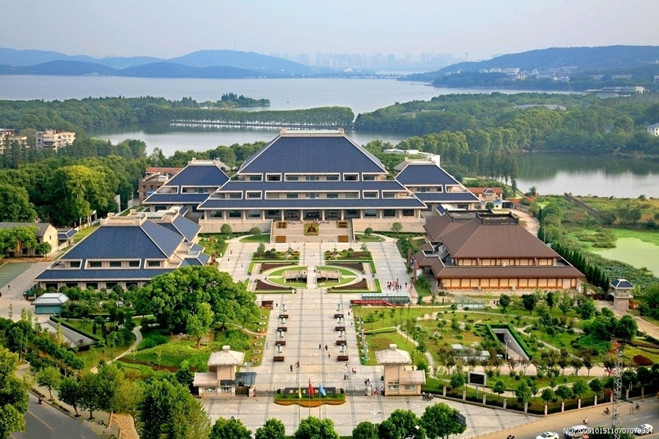
Hubei Provincial Museum.
1. The Sword of Goujian
One of the museum’s most famous artifacts, the Sword of Goujian, is a stunning piece of craftsmanship that dates back to the Spring and Autumn Period (770-476 BC). Renowned for its exceptional preservation, this sword has fascinated historians and visitors alike. Expect to encounter a line of eager onlookers vying for a glimpse of this legendary weapon, so arrive early to secure a good spot for your photo opportunity.
2. The Tomb of Marquis Yi
Step into the world of the ancient Chu State with the Tomb of Marquis Yi, a remarkable archaeological find from 1978. This tomb belonged to Marquis Yi of Zeng, a notable noble from the Warring States Period. The tomb is adorned with exquisite bronze artifacts, including a set of chime bells known as Bianzhong, which are celebrated for their melodic tones and intricate designs. Interactive displays allow visitors to simulate the unique sounds of these ancient instruments, creating a memorable auditory experience.
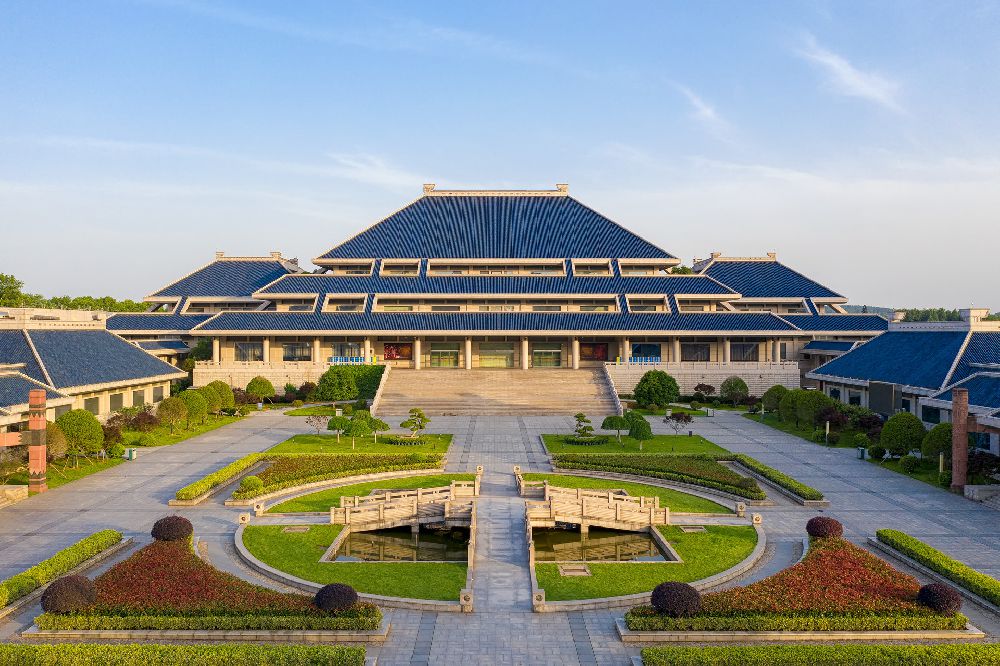
Hubei Provincial Museum.
3. Chu Culture Exhibition Hall
Delve deeper into the fascinating history of the Chu State in the dedicated Chu Culture Exhibition Hall. This section showcases a variety of artifacts that depict the daily life, customs, and technologies of this ancient civilization. Highlights include beautifully crafted pottery, jade ornaments, and tools that reveal the sophisticated craftsmanship of the time.
4. Chime Bell Exhibition Hall
The Chime Bell Exhibition Hall will leave you in awe with its array of ancient bells, including the renowned Bianzhong. These bells are not just musical instruments but also hold historical significance, as they were used in rituals and ceremonies. The interactive display allows visitors to strike the bells and hear their distinct tones, showcasing the advanced metallurgical techniques of ancient artisans.
5. Comprehensive Exhibition Hall
The Comprehensive Exhibition Hall serves as a gateway to the museum’s vast collection. Here, you can explore a variety of exhibits that span different periods and regions of Chinese history. The layout intelligently reflects the architectural style of the Chu State, immersing you in the cultural atmosphere of ancient China.

Hubei Provincial Museum.
Visitor Tips: Maximizing Your Experience
- Admission: Entrance to the museum is free, but reservations are required. Be sure to book your tickets in advance through Weixin or WeChat to avoid disappointment.
- Timing: Aim to arrive right when the museum opens at 9 AM. This strategy will help you dodge the crowds, especially at popular exhibits like the Sword of Goujian.
- Guided Tours: Consider hiring a local tour guide to enhance your understanding of the exhibits. English translations are available but may be limited, so a knowledgeable guide can provide greater context and insights.
- Audio Devices: While the museum offers audio guides, many visitors recommend bringing your own translation device for a more thorough exploration of the artifacts.
Conclusion
The Hubei Provincial Museum is not merely a place to view artifacts; it is a journey through time that brings the rich tapestry of Chinese history to life. From the legendary Sword of Goujian to the haunting melodies of ancient bells, every exhibit offers a unique glimpse into the past. For anyone captivated by history and culture, this museum is an essential stop on your journey through Wuhan.

Hubei Provincial Museum.
Planning Your Visit: A Practical Guide
Your Guide to Visiting the Hubei Provincial Museum
The Hubei Provincial Museum, located in the bustling city of Wuhan, is a treasure trove of Chinese history and culture. With a collection that spans over 200,000 artifacts, many dating back more than 2,000 years, this museum offers a captivating glimpse into the ancient Chu State and the artistry of the Han dynasty. Below is a comprehensive guide to help you make the most of your visit.
Location and Contact Information
- Address: 156 Donghu Rd, Wuchang District, Wuhan, Hubei, China, 430071
- Phone: +86 27 8679 4127

Hubei Provincial Museum.
Opening Hours
- Daily: 9:00 AM – 5:00 PM (last entry at 4:00 PM)
- Closed on: Mondays
Admission
- Cost: Free
- Reservation Required: You must reserve your tickets at least 30 minutes prior to entry via Weixin/Wechat. Without a reservation, you will not be granted entry.
Highlights of the Museum
- Sword of Goujian: An iconic artifact known for its exquisite craftsmanship and historical significance.
- Tomb of Marquis Yi: Explore the well-preserved artifacts from one of the most significant archaeological finds in China.
- Chime Bell Exhibition: Discover ancient musical instruments and even play a simulated chime bell for a unique interactive experience.
- Bronze Statuary and Artifacts: Witness the advanced techniques of ancient Chinese artisans, including the lost wax method used in bronze casting.
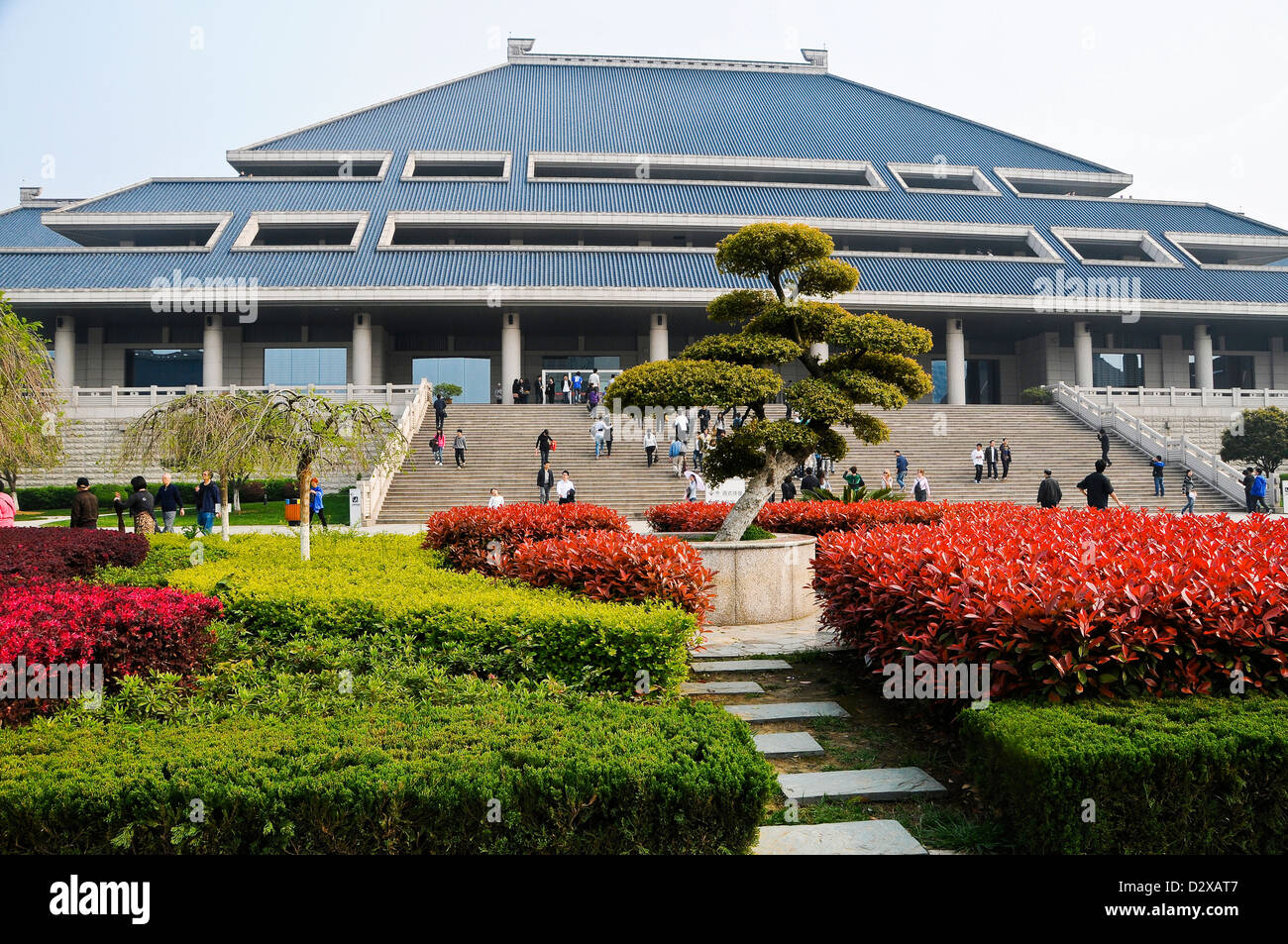
Hubei Provincial Museum.
Tips for a Successful Visit
- Arrive Early: To avoid crowds, especially around popular exhibits like the Sword of Goujian, aim to arrive right at opening time.
- Consider a Local Guide: Engaging a local tour guide can enrich your experience, providing deeper insights into the exhibits, especially since English translations may be limited.
- Audio Devices: While audio guides are available, many visitors recommend bringing your own device or translation app for better context and detailed descriptions.
- Be Prepared for Crowds: Certain areas, particularly around popular artifacts, can get quite crowded. Patience is key!
Exploring the Museum
The museum is divided into three main exhibition halls:
– Comprehensive Exhibition Hall: A broad overview of Hubei’s rich history.
– Chu Culture Exhibition Hall: Focused on the unique cultural legacy of the Chu State during the Spring and Autumn Period.
– Chime Bell Exhibition Hall: Featuring an impressive collection of ancient bells, where you can experience their sounds through interactive displays.
Accessibility
The museum is wheelchair accessible, but it’s advisable to check ahead for any specific needs you may have.
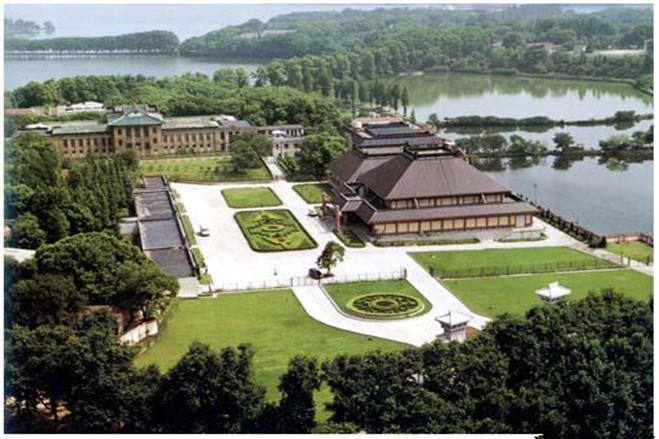
Hubei Provincial Museum.
Nearby Attractions
After your visit to the museum, consider exploring these nearby sites:
– Yellow Crane Tower: A famous historical tower offering panoramic views of the Yangtze River.
– Guiyuan Temple: A tranquil Buddhist temple known for its exquisite architecture and serene atmosphere.
– Wuhan Art Museum: Showcasing modern and contemporary art, perfect for art enthusiasts.
Conclusion
A visit to the Hubei Provincial Museum is not just an opportunity to see ancient artifacts; it’s a journey through the rich tapestry of Chinese history. With careful planning and an eagerness to explore, your time at this museum will undoubtedly be a highlight of your trip to Wuhan.
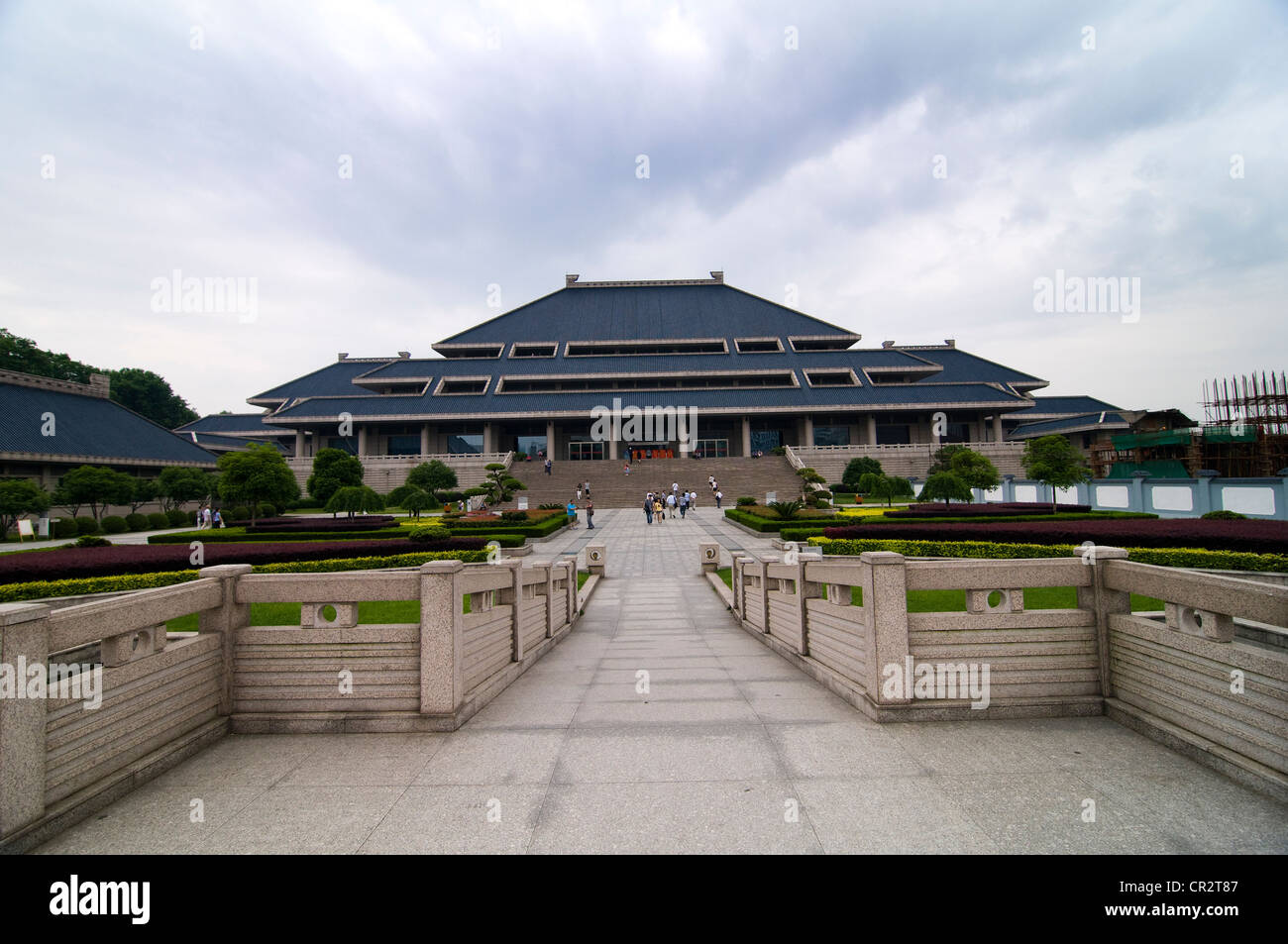
Hubei Provincial Museum.
Tickets: Prices, Booking, and Tips
Visiting the Hubei Provincial Museum is an extraordinary opportunity to immerse yourself in the rich tapestry of Chinese history and culture. Here’s everything you need to know about securing your tickets, pricing, and tips to enhance your experience.
Admission Information
- Free Entry: One of the most remarkable aspects of the Hubei Provincial Museum is that admission is free for all visitors.
- Reservation Required: Despite the free entrance, it is essential to reserve your tickets in advance. Reservations can be made through Weixin/Wechat, and it’s advisable to do this at least 30 minutes before your intended entry time.
Ticket Booking Tips
- Book Early: To avoid disappointment, especially during weekends and holidays, consider making your reservation as early as possible.
- Arrive Early: The museum opens at 9 AM. Arriving at opening time not only allows you to beat the crowds but also gives you a chance to explore popular exhibits, such as the Sword of Goujian, with fewer people around.
- Use Technology: If you’re unfamiliar with the reservation process, using Weixin/Wechat can simplify your booking. You can find detailed guidance within the app to assist you.
- Group Visits: If you’re traveling with a group, ensure that you make a collective reservation to streamline your entry.
On-Site Tips
- Be Prepared for Crowds: Certain exhibits can attract significant attention, notably the Sword of Goujian. If you prefer a less hectic experience, consider visiting on a weekday.
- Audio Guides: While the museum offers audio guides, some visitors have noted that the English descriptions may be lacking. Bring your own translation device or consider hiring a local tour guide for deeper insights into the exhibits.
- Interact with the Displays: Don’t miss the interactive chime bell display, where you can simulate the tones of ancient bells by pressing keys on a keyboard. It’s a unique way to engage with the museum’s offerings!
Contact Information
- Location: 156 Donghu Rd, Wuchang District, Wuhan, Hubei, China, 430071
- Phone: +86 27 8679 4127
Conclusion
With its extensive collection of over 200,000 artifacts, the Hubei Provincial Museum is a treasure trove of history waiting to be explored. By following these ticketing tips and being prepared for your visit, you’ll ensure a memorable experience that brings the fascinating history of the Chu State and beyond to life. Enjoy your journey through time at one of Wuhan’s foremost cultural landmarks!
How to Get There: A Complete Transportation Guide
Making Your Way to the Hubei Provincial Museum
Visiting the Hubei Provincial Museum, a treasure trove of ancient artifacts and cultural heritage, is a must for international travelers in Wuhan. Located at 156 Donghu Rd, Wuchang District, Wuhan, Hubei, China, the museum is easily accessible through various modes of transportation. Here’s a comprehensive guide on how to reach this historical gem.
Arriving by Air
Wuhan Tianhe International Airport (WUH) is the primary airport serving the city. Upon landing, you have several options to get to the museum:
-
Taxi: The most convenient choice. Taxis are readily available outside the terminal. The ride to the museum takes about 50 minutes, depending on traffic, and costs approximately ¥100-150.
-
Airport Shuttle: You can take the shuttle bus to the city center and then transfer to a taxi or public transport. Buses run frequently and are a budget-friendly option.
Getting to the Museum from Wuhan’s City Center
If you’re already in the city, various public transport options can take you directly to the museum:
-
Metro: The Wuhan Metro Line 4 is one of the most efficient ways to travel. You can board at any central station and travel to Donghu Scenic Area Station. From there, it’s about a 15-minute walk to the museum. Signs are available in both Chinese and English to guide you.
-
Bus: Several bus lines serve the area around the museum. The following buses stop nearby:
- Bus 402
- Bus 511
- Bus 546
Ensure you have a transportation card or small change (in yuan) for bus fare, which is typically around ¥2-3.
- Taxi or Ride-Hailing Services: For those preferring door-to-door service, taxis and ride-hailing apps like Didi are widely used. A ride from the city center should cost between ¥30-60 and take about 20-30 minutes, depending on traffic.
Tips for a Smooth Visit
-
Reservation Required: Admission to the museum is free, but you must reserve a ticket in advance via Weixin/Wechat. Make sure to do this at least 30 minutes prior to your visit, as no reservation means no entry.
-
Timing: To avoid the crowds, aim to arrive at opening time (9 AM). The museum can get busy, especially around popular exhibits like the Sword of Goujian.
-
Guided Tours: Consider hiring a local tour guide for an enriched experience. While audio guides are available, they often lack comprehensive English translations.
-
Accessibility: The museum is equipped with facilities for visitors with disabilities, including ramps and elevators.
Exploring the Area
Once you’ve explored the Hubei Provincial Museum, consider visiting nearby attractions such as the Yellow Crane Tower and Wuhan Art Museum. Both are within a short distance and can easily be accessed by walking or a quick taxi ride.
With this transportation guide, you’re well on your way to immersing yourself in the rich history and culture housed within the Hubei Provincial Museum. Enjoy your journey through time!
Local Cuisine and Accommodation Nearby
Visiting the Hubei Provincial Museum in Wuhan is not just a feast for the eyes; it can also be a culinary adventure and a chance to experience local hospitality. After immersing yourself in the exquisite artifacts that span over 2,000 years of history, you’ll find plenty of options to indulge in local cuisine and comfortable accommodations nearby.
Culinary Delights Near the Museum
Wuhan is renowned for its rich culinary heritage, and several eateries close to the museum offer delicious local dishes. Here are some must-try options:
1. Hot Dry Noodles (热干面)
- Where to Find: A local favorite, you can find hot dry noodles at various street vendors and small restaurants in the vicinity.
- What to Expect: This iconic dish features chewy noodles topped with sesame paste, pickled vegetables, and chili oil. It’s the perfect quick bite before or after your museum visit.
2. Doupi (豆皮)
- Where to Find: Look for small eateries specializing in Hubei cuisine.
- What to Expect: Doupi is a delightful local snack made of rice and a mix of fillings, often wrapped in a thin crepe-like layer. It’s fried until crispy and served with a side of spicy dipping sauce.
3. Wuchang Fish (武昌鱼)
- Where to Find: Many restaurants in the Wuchang District serve this specialty.
- What to Expect: Known for its delicate flavor, Wuchang fish is typically steamed and seasoned with ginger and scallions, highlighting the freshness of the catch from the Yangtze River.
4. Hubei Pickled Cabbage (湖北酸菜)
- Where to Find: Available at various local markets and restaurants.
- What to Expect: This tangy side dish complements many meals and is a staple in Hubei households, showcasing the region’s preference for pickled flavors.
Where to Stay
After a day of exploring the museum and savoring local dishes, you’ll want a comfortable place to rest. Here are some accommodations that blend comfort with convenience:
1. Wanda Vista Wuhan**
- Location: Approximately 10 minutes from the museum.
- Highlights: This luxury hotel offers elegant rooms, an on-site restaurant serving a mix of international and local cuisine, and stunning views of the Yangtze River.
2. Novotel Wuhan Xinhua**
- Location: About a 15-minute drive from the museum.
- Highlights: Featuring modern rooms and amenities, this hotel is a great choice for families and business travelers alike. Its central location provides easy access to local attractions.
3. Hanting Express Hotel**
- Location: Within walking distance to the museum.
- Highlights: A more budget-friendly option, this hotel offers clean and simple accommodations, perfect for travelers looking to explore without breaking the bank.
4. Wuhan Jin Jiang International Hotel**
- Location: A short drive from the museum.
- Highlights: This upscale hotel combines comfort with convenience and includes several dining options, making it an excellent base for your Wuhan adventures.
Conclusion
Your visit to the Hubei Provincial Museum will undoubtedly enrich your understanding of Chinese history and culture. Pair this experience with the local cuisine and comfortable accommodation options nearby, and you’ll create lasting memories that go beyond the artifacts on display. Enjoy your journey through Wuhan, where history and hospitality await!
Frequently Asked Questions
Frequently Asked Questions About Hubei Provincial Museum
1. What are the opening hours for the Hubei Provincial Museum?
The museum is open daily from 9:00 AM to 5:00 PM. It is advisable to arrive early to enjoy the exhibits without the crowds.
2. Is there an admission fee?
Admission to the Hubei Provincial Museum is free, but it is mandatory to make a reservation in advance. Reservations can be made through Weixin/WeChat.
3. How can I reserve my tickets?
You can reserve your tickets by using the Weixin/WeChat app. It is recommended to make your reservation at least 30 minutes before your intended entry time.
4. What are the must-see exhibits in the museum?
Key highlights include:
– The Sword of Goujian, an exquisitely preserved ancient sword.
– The Tomb of Marquis Yi, showcasing remarkable artifacts from the Han Dynasty.
– The Chime Bell Exhibition Hall, featuring ancient chime bells with interactive displays.
5. Are there English descriptions available for the exhibits?
While the museum provides some English descriptions, they can be limited. It is highly recommended to bring a translation device or to consider hiring a local tour guide for more comprehensive information.
6. Can I rent audio guides at the museum?
The museum does offer audio devices for rent; however, many visitors have found that these do not provide extensive information. Bringing your own audio guide or translation device is a better option.
7. What should I expect in terms of crowds?
The museum can get quite busy, especially in popular areas like the Sword of Goujian. To avoid long queues, plan to visit right at opening time or on weekdays.
8. Is there any special etiquette I should be aware of?
As with many museums, it’s important to be respectful of the artifacts. Avoid touching exhibits, speak softly, and be patient when navigating through crowded areas, especially near popular displays.
Final Thoughts on Your Trip
As you conclude your exploration of the Hubei Provincial Museum, take a moment to reflect on the rich tapestry of history and culture that this remarkable institution offers. Nestled in the heart of Wuhan, the museum serves as a vibrant portal to ancient China, particularly the fascinating era of the Chu State. With over 200,000 artifacts showcasing over 2,000 years of history, each exhibit tells a story that enhances your understanding of Chinese civilization.
Highlights of Your Visit
- The Sword of Goujian: This iconic artifact, renowned for its unparalleled preservation, stands as a testament to the advanced metallurgy of ancient China.
- Marquis Yi’s Tomb: The intricacy of the burial goods and the innovative techniques used in their creation, like the lost wax method, provide a glimpse into the craftsmanship of the Han dynasty.
- Chime Bell Exhibition: The interactive displays allow you to engage with history in a uniquely auditory way, experiencing the ancient music that once resonated in the courts of the Chu nobility.
Practical Tips for Future Visitors
- Plan Ahead: Remember that admission is free, but reservations are required. Booking your spot in advance will save you time and ensure a smoother experience.
- Visit Early: To fully enjoy the museum without the hustle and bustle, consider arriving right at opening time. This will allow you to appreciate the exhibits, especially the Sword of Goujian, with fewer crowds.
- Enhance Your Experience: While audio guides are available, many visitors recommend hiring a local guide for deeper insights into the exhibits, as English translations can be limited.
A Cultural Journey
Your time at the Hubei Provincial Museum is not just about viewing artifacts; it’s about connecting with the past. The stories of emperors, artisans, and everyday people come alive through the meticulously curated collections. As you leave, carry with you the echoes of ancient bells and the whispers of centuries-old tales, allowing them to enrich your understanding of China’s vast cultural heritage.
In a world where history often feels distant, the Hubei Provincial Museum stands as a bridge—inviting you to step into the echoes of time and emerge with a deeper appreciation for the intricate legacy of Chinese history. Embrace the journey, and let the rich narratives of the past inspire your future travels.